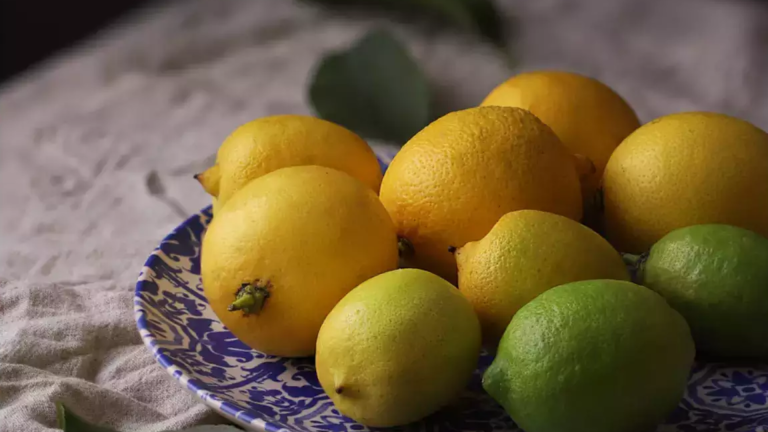Ever stood in the produce section wondering which lemon to buy? You’re not alone. In this article, I’ll walk you through different types of lemons and how to use each one.
Most people are familiar with the basic grocery store lemon, but there’s a whole world of options available! From super-sweet Meyer lemons to giant Ponderosa varieties, I’ve tested them all in my kitchen.
As a home cook who’s spent years working with citrus, I can help you:
- Pick the right lemon for any recipe
- Understand what makes each variety special
- Find new ways to use lemons you might not have tried
Whether you’re making lemonade, baking a cake, or adding zest to dinner, knowing your lemons makes a huge difference in the final taste. Let me solve the lemon mystery for you once and for all.
Different Types of Lemons Worldwide
1. Eureka Lemon
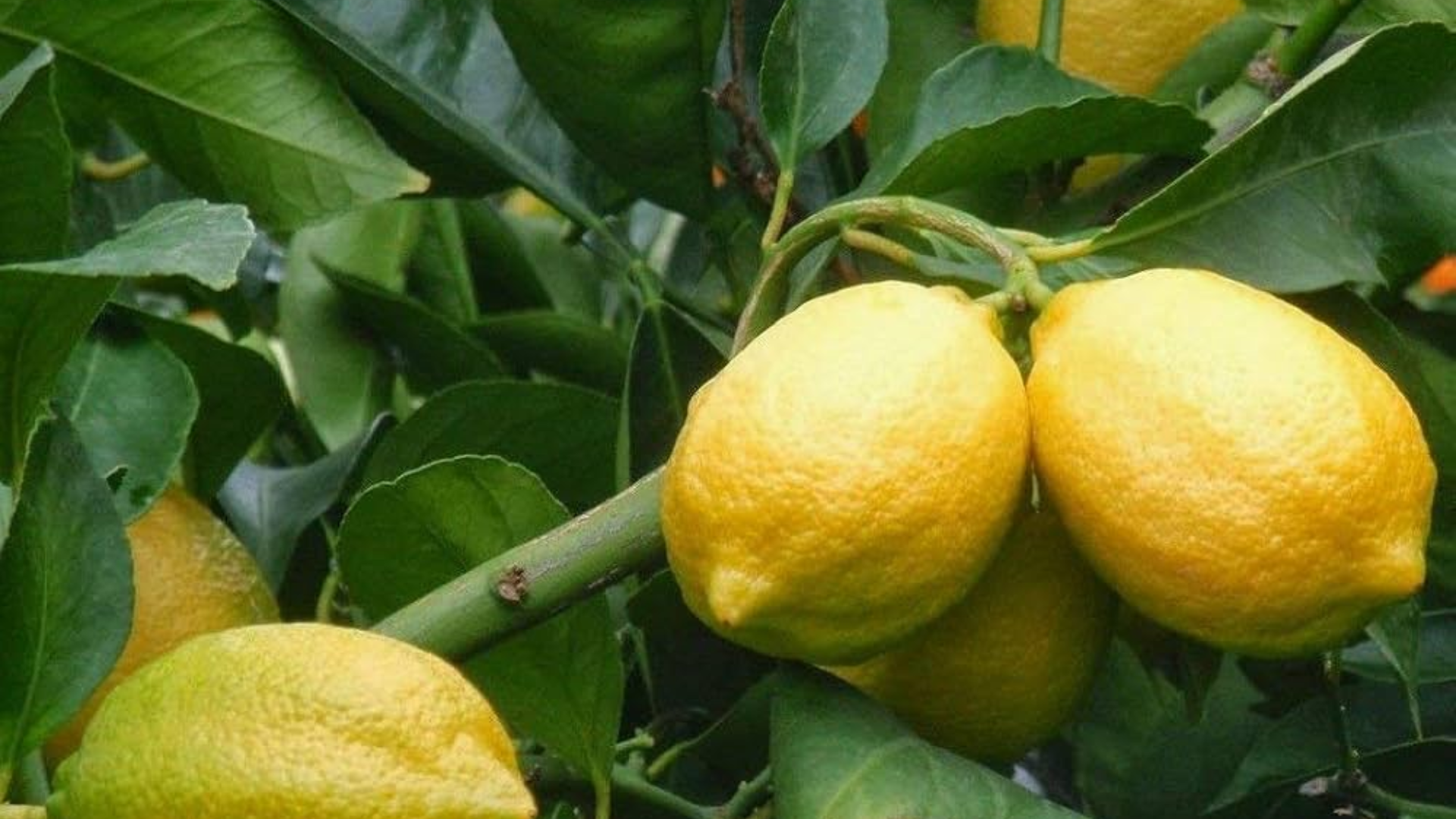
- Meaning: The most common lemon in U.S. stores
- Origin: California
These are the classic lemons most of us know. I use them for almost everything in my kitchen, from pasta to pies. They have thick, bumpy skin and a high acid content, making them ideal for cooking.
Eureka lemons are available year-round and have a very low seed count. Their strong, tangy flavor pairs well with other ingredients, making them great for both sweet and savory dishes.
2. Lisbon Lemon
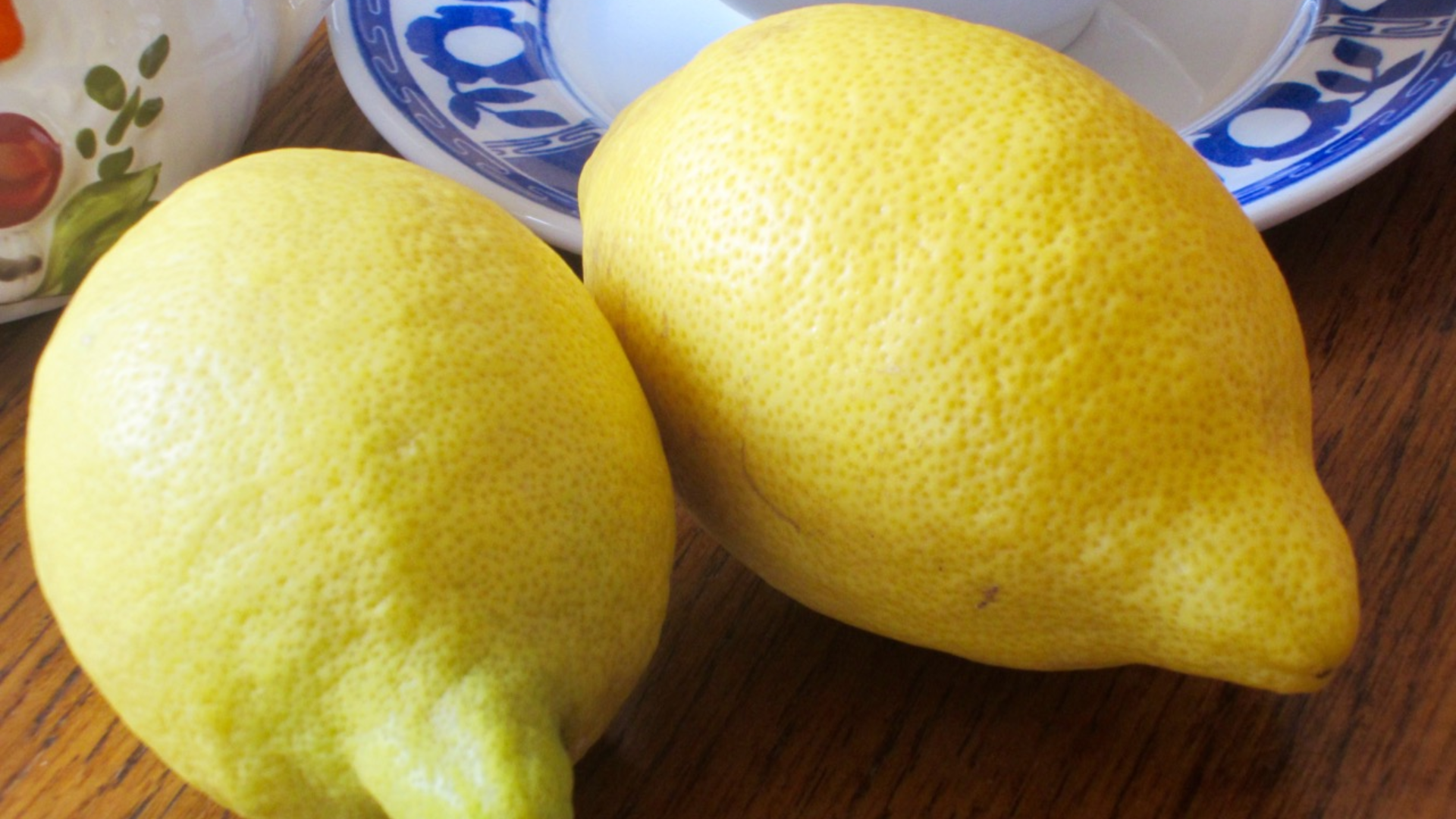
- Meaning: Similar to Eureka but more cold-tolerant
- Origin: Portugal, then brought to Australia and California
These lemons resemble Eurekas but grow better in cooler areas. I find they have fewer seeds, which makes them easier to use in dressings and drinks where you don’t want to strain out seeds.
Lisbon lemons also tend to have smoother skin and a slightly more pointed end. They’re often juicier than Eurekas, and their trees have fewer thorns, making them easier to harvest in home gardens.
3. Meyer Lemon
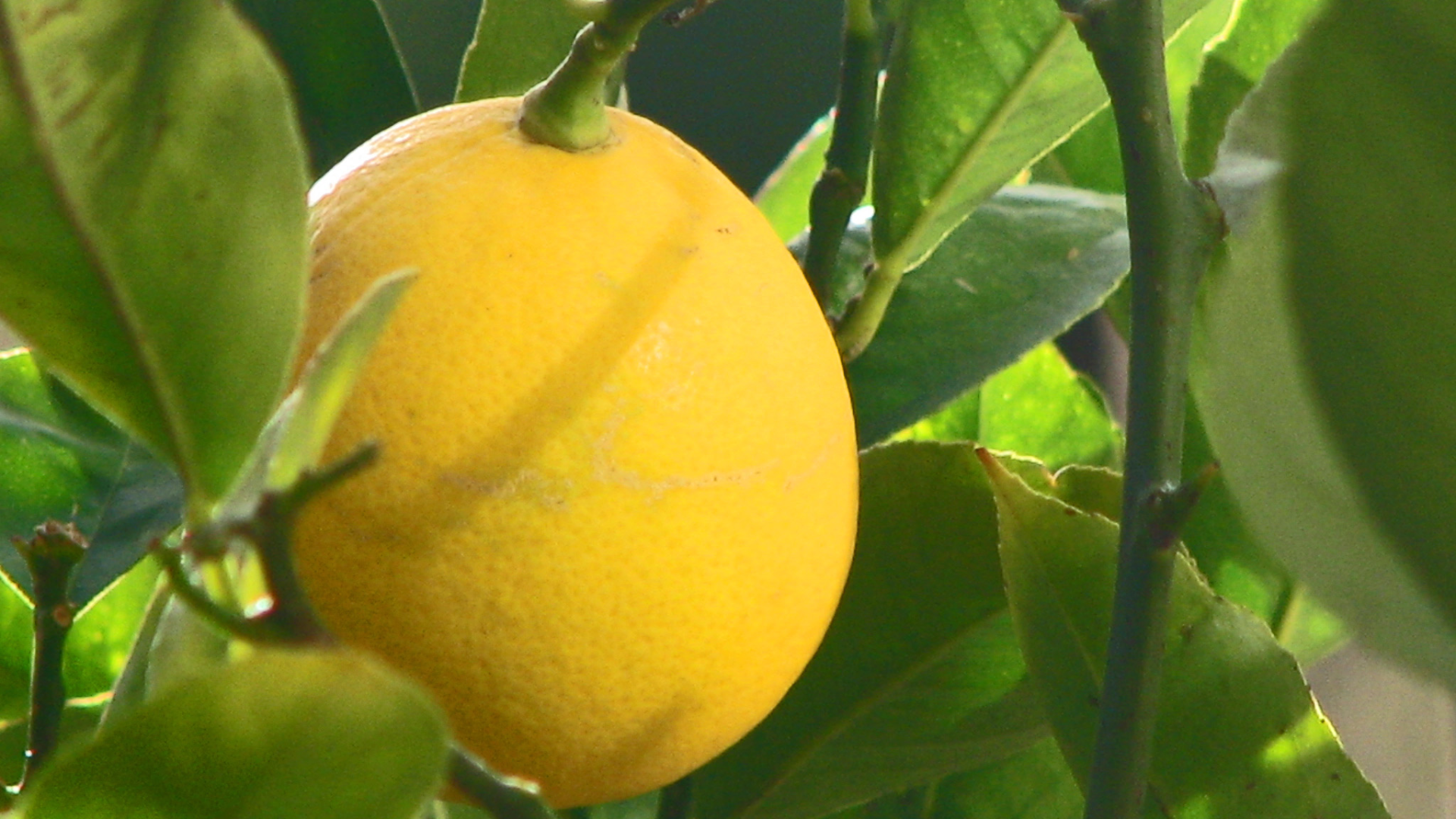
- Meaning: A lemon-orange hybrid with a sweeter taste
- Origin: China; introduced to the U.S. by Frank Meyer in 1908
These are my favorites for baking! They’re smaller, rounder, and have smoother skin than regular lemons. The juice is much less sour, with an almost sweet quality that makes amazing lemonade.
Meyer lemons have a distinctive floral aroma that regular lemons lack. Their thin skin is also edible and less bitter than that of other varieties, allowing you to use the whole fruit in marmalades and preserves.
4. Ponderosa Lemon
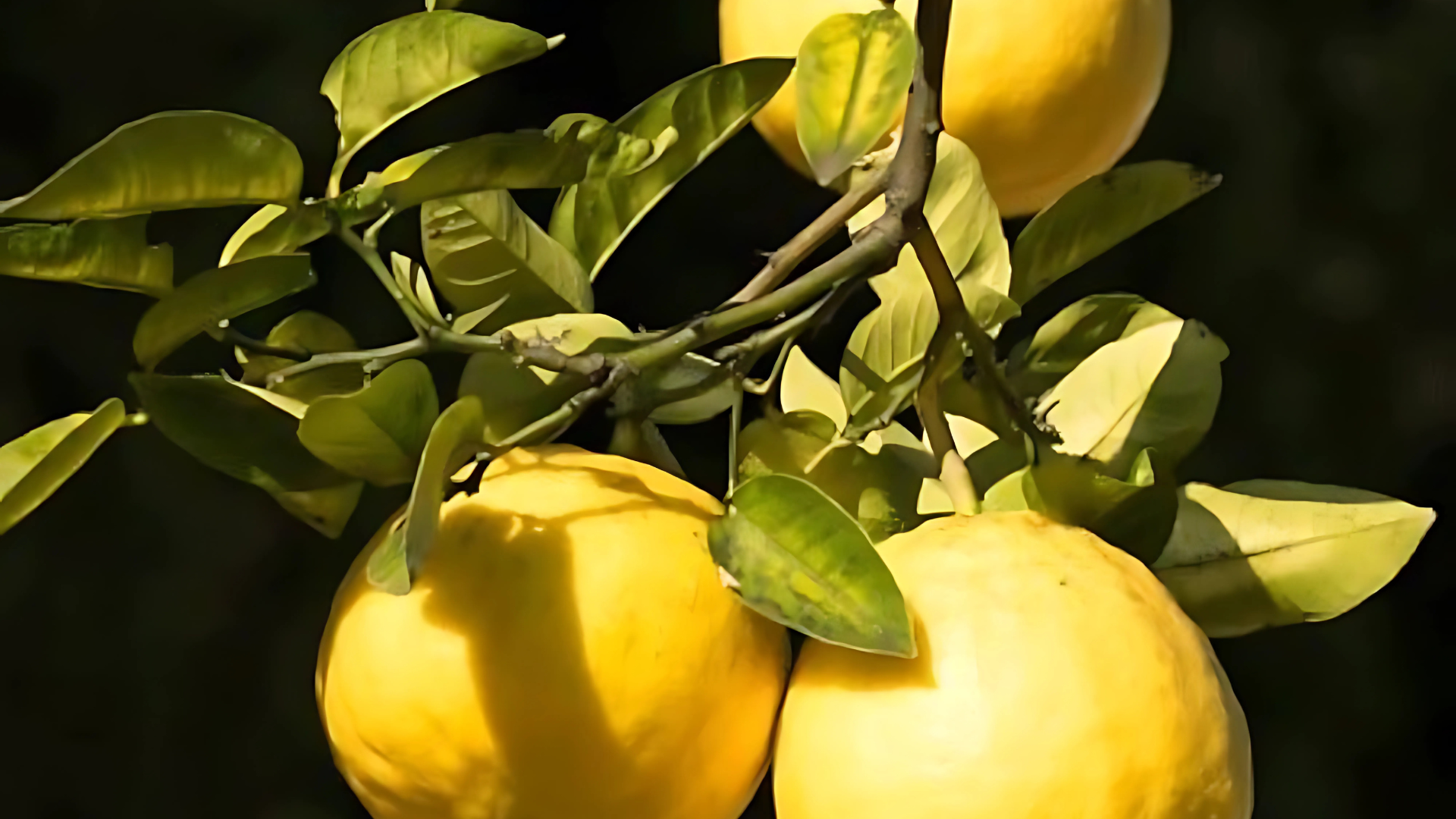
- Meaning: A very large, thick-skinned citrus
- Origin: Likely a lemon-citron hybrid
These huge lemons can grow as big as grapefruits! While they’re not as juicy as others, I love their strong smell. They make great zest for cooking, and their thick rind is perfect for candying.
Ponderosa lemons are actually grown more as novelty or ornamental plants than for commercial food use. Despite their size, they taste similar to standard lemons but with more pith and less juice.
5. Femminello Lemon
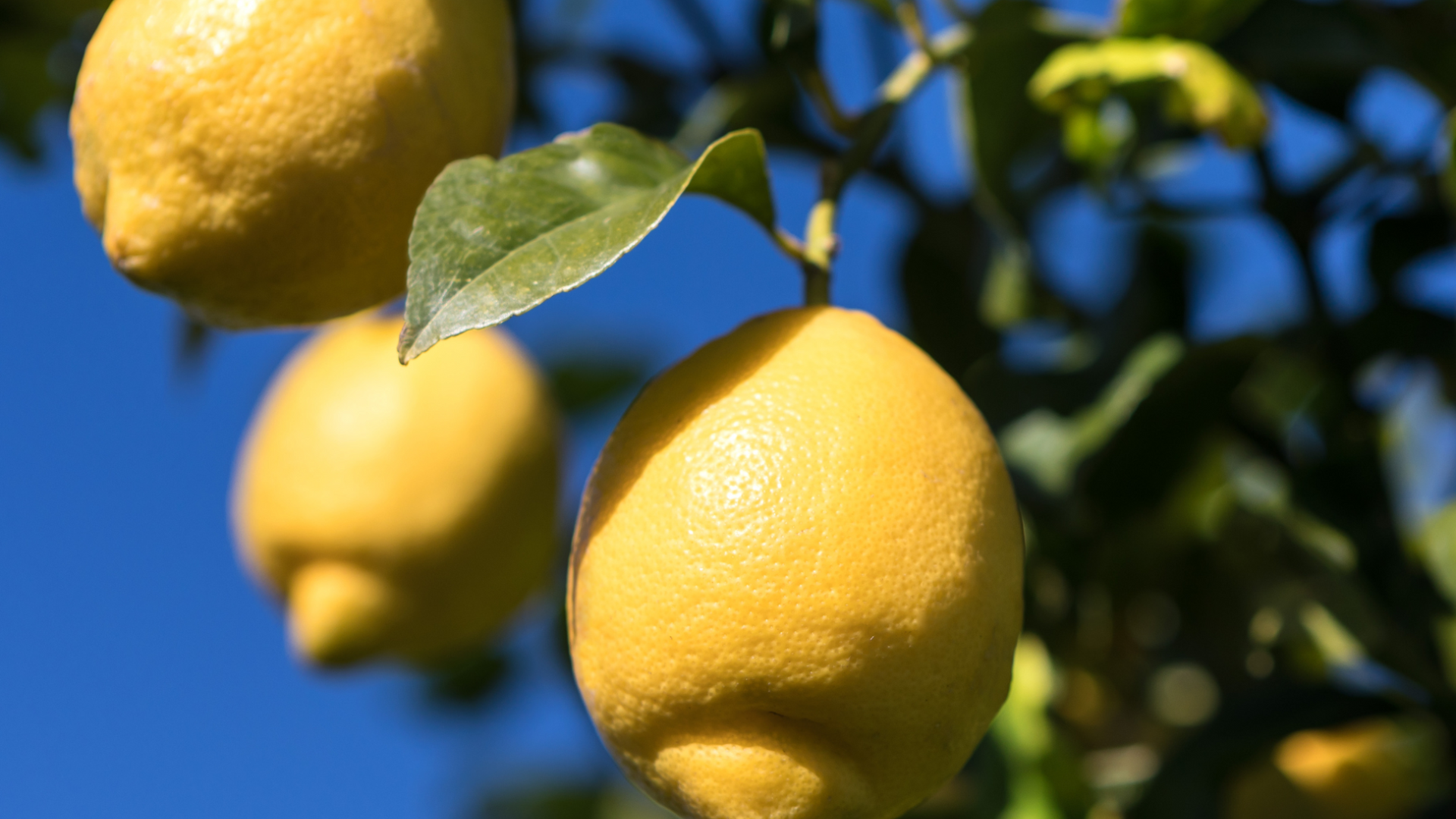
- Meaning: “Little female” in Italian
- Origin: Italy’s Amalfi Coast and Sicily
These Italian lemons make up about 75% of Italy’s lemon crop. They’re very juicy and have a clean, strong flavor. I’ve found they’re the top choice for making authentic limoncello.
Femminello lemons come in several sub-varieties, with the most prized growing along the Amalfi Coast. They have medium-thick skin and a perfect balance of acid and oil, which extracts beautifully into alcohol.
6. Verna Lemon
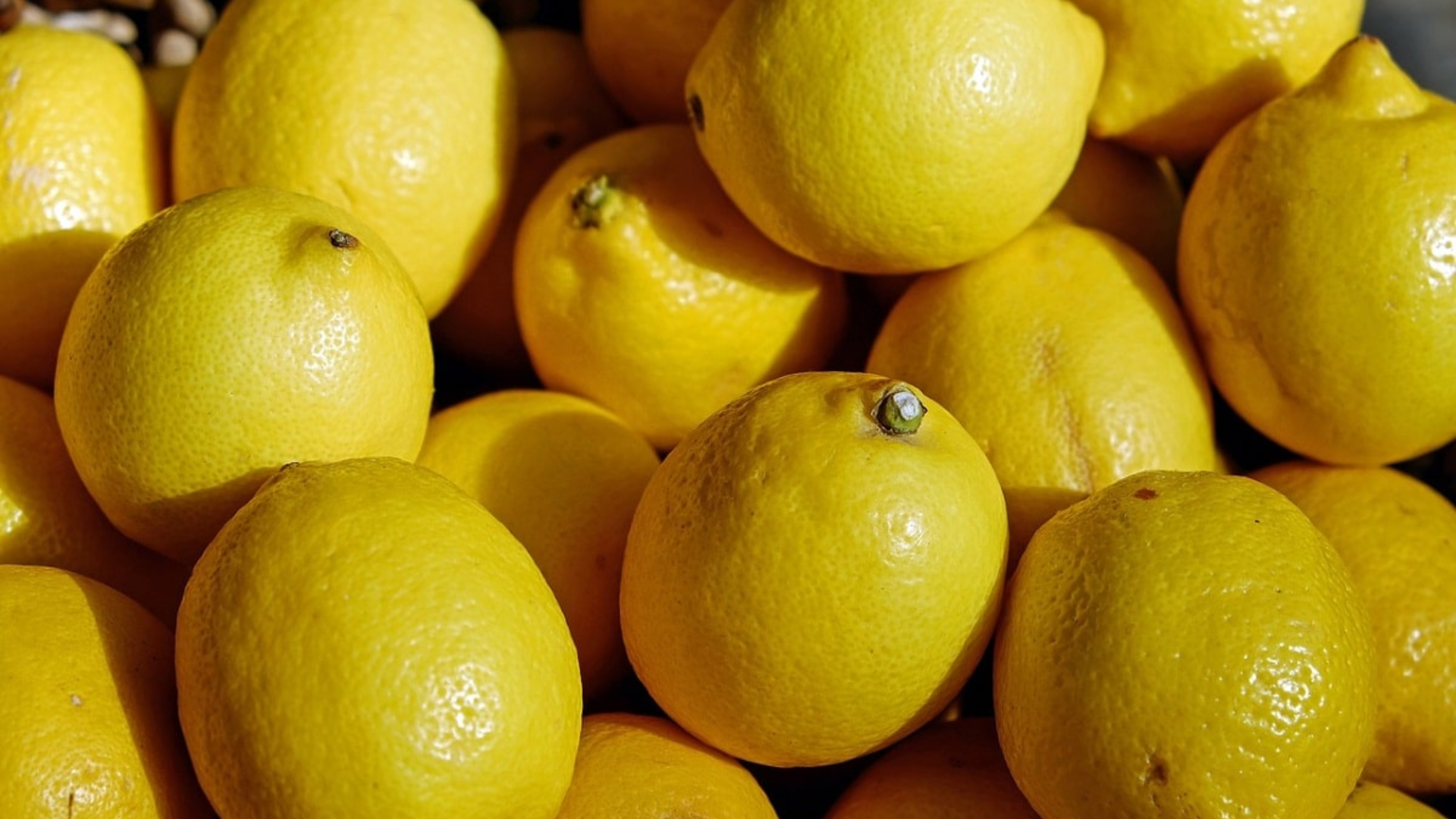
- Meaning: Late-season Spanish lemon
- Origin: Spain
These Spanish lemons have a thick but easy-to-peel skin. I like their strong juice and the fact that they produce fruit almost year-round in the right climate.
Verna lemons are larger than many other varieties and have a distinctive nipple at one end. They’re particularly valued for their second harvest (called “segundos”), which produces fruit in summer when other lemon varieties aren’t available.
7. Primofiori Lemon
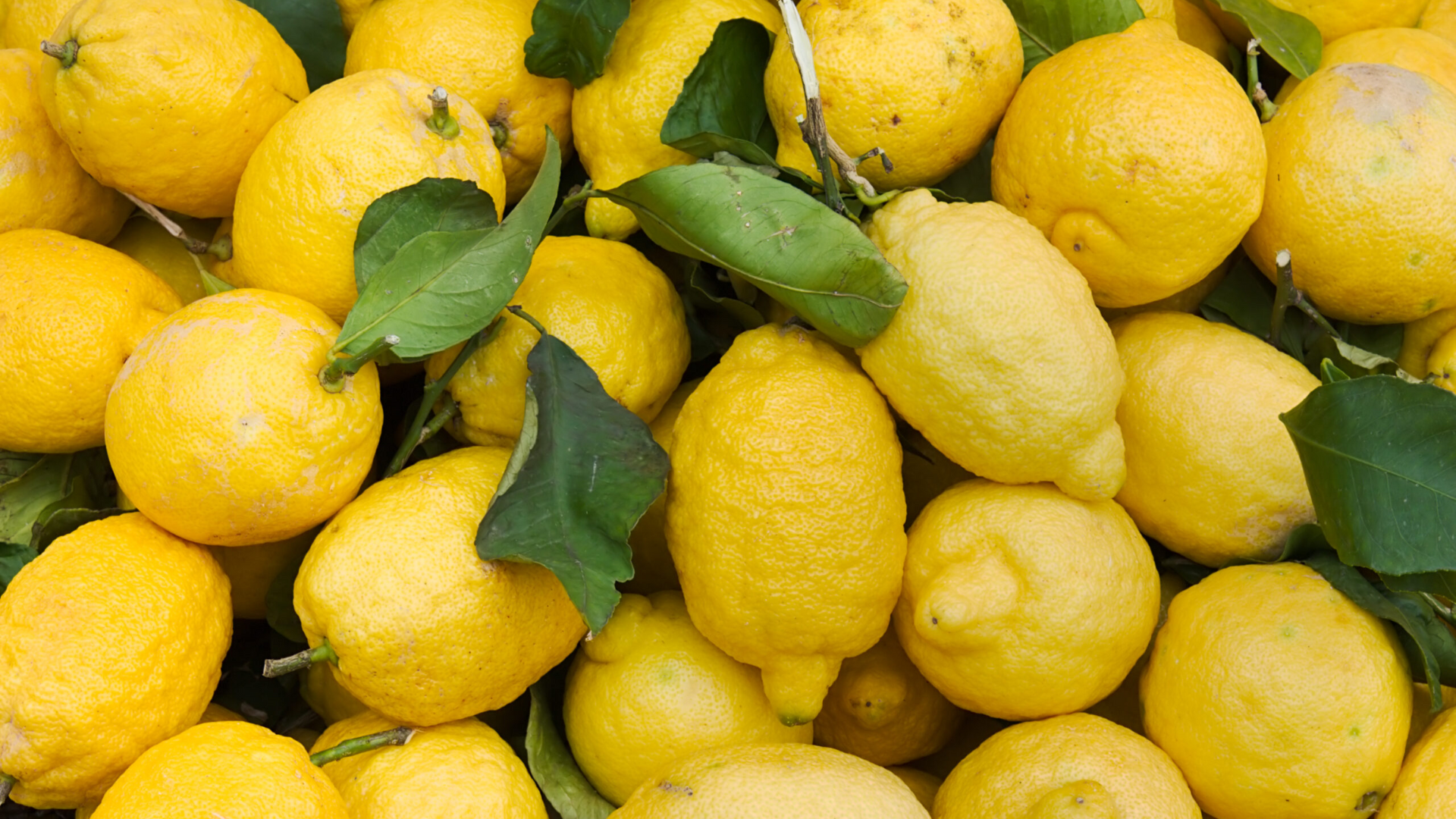
- Meaning: “First flowers” in Spanish
- Origin: Spain
Small and round, these lemons are big in European markets. They’re the first harvest of the season. I find their thin skin and high juice content make them great for quick squeezing.
Primofiori lemons, also known as Fino lemons, have a classic oval shape with a small nipple at the tip. Their balanced acid content makes them versatile for both cooking and fresh applications.
8. Yen Ben Lemon
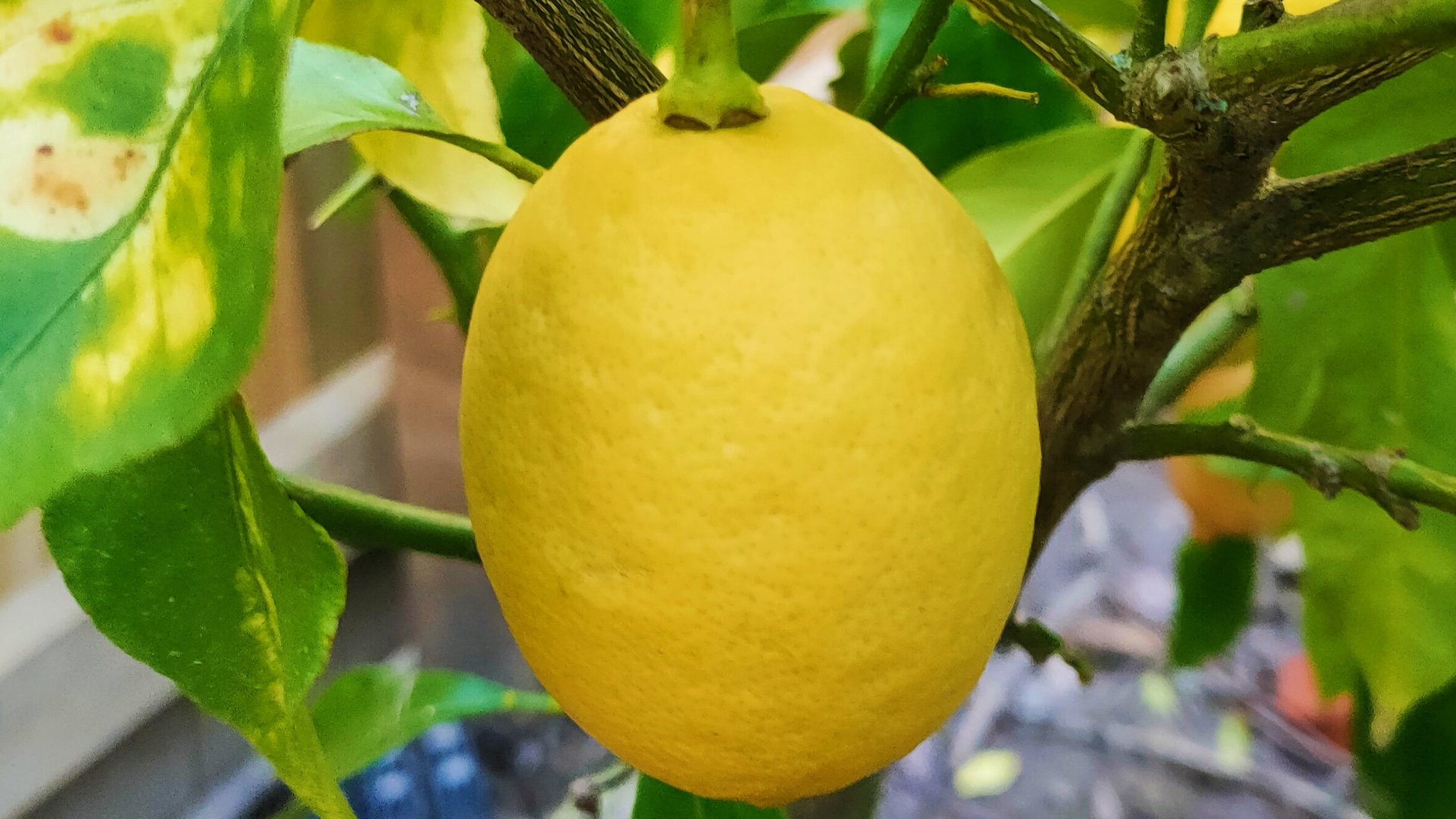
- Meaning: A Lisbon lemon variant
- Origin: Australia and New Zealand
These have a very sharp, clean taste and thin skin, with a high oil content. When I want a strong lemon zest flavor, this is my go-to choice if I can find it.
Yen Ben lemons were discovered as a natural mutation of Lisbon lemons in Australia. They’re known for producing most of their crop during summer months, making them valuable when other varieties aren’t producing.
9. Santa Teresa Lemon
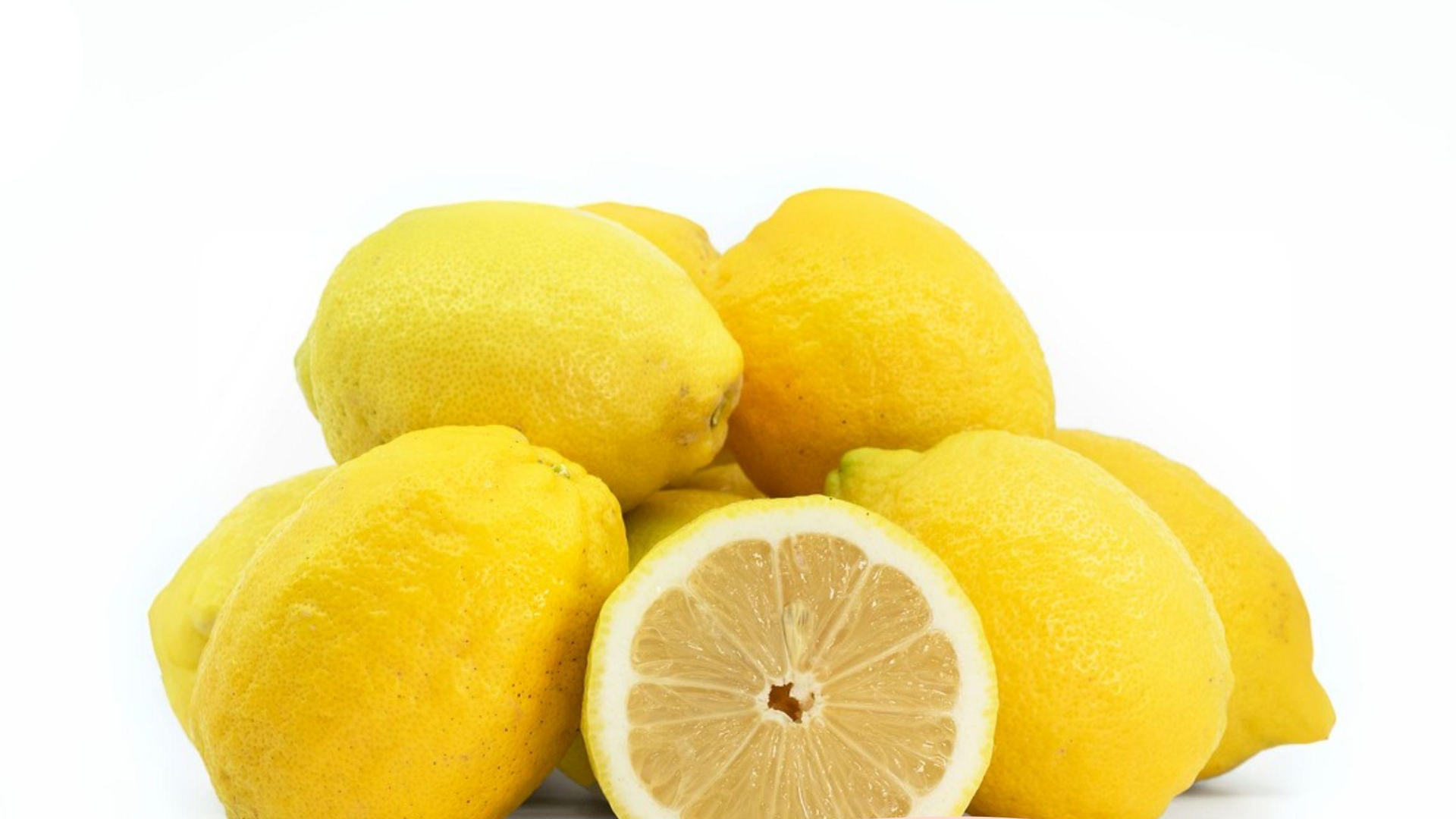
- Meaning: Named after the region in Italy
- Origin: Southern Italy
These Italian lemons have a high oil content in their skin. I’ve read they’re one of the best for making lemon essential oil and high-end lemon products.
Santa Teresa lemons are slightly more oval than round and have a medium-thick rind. They’re less commonly exported, making them a local specialty prized by chefs for their unique properties.
10. Pink Lemon (Variegated)
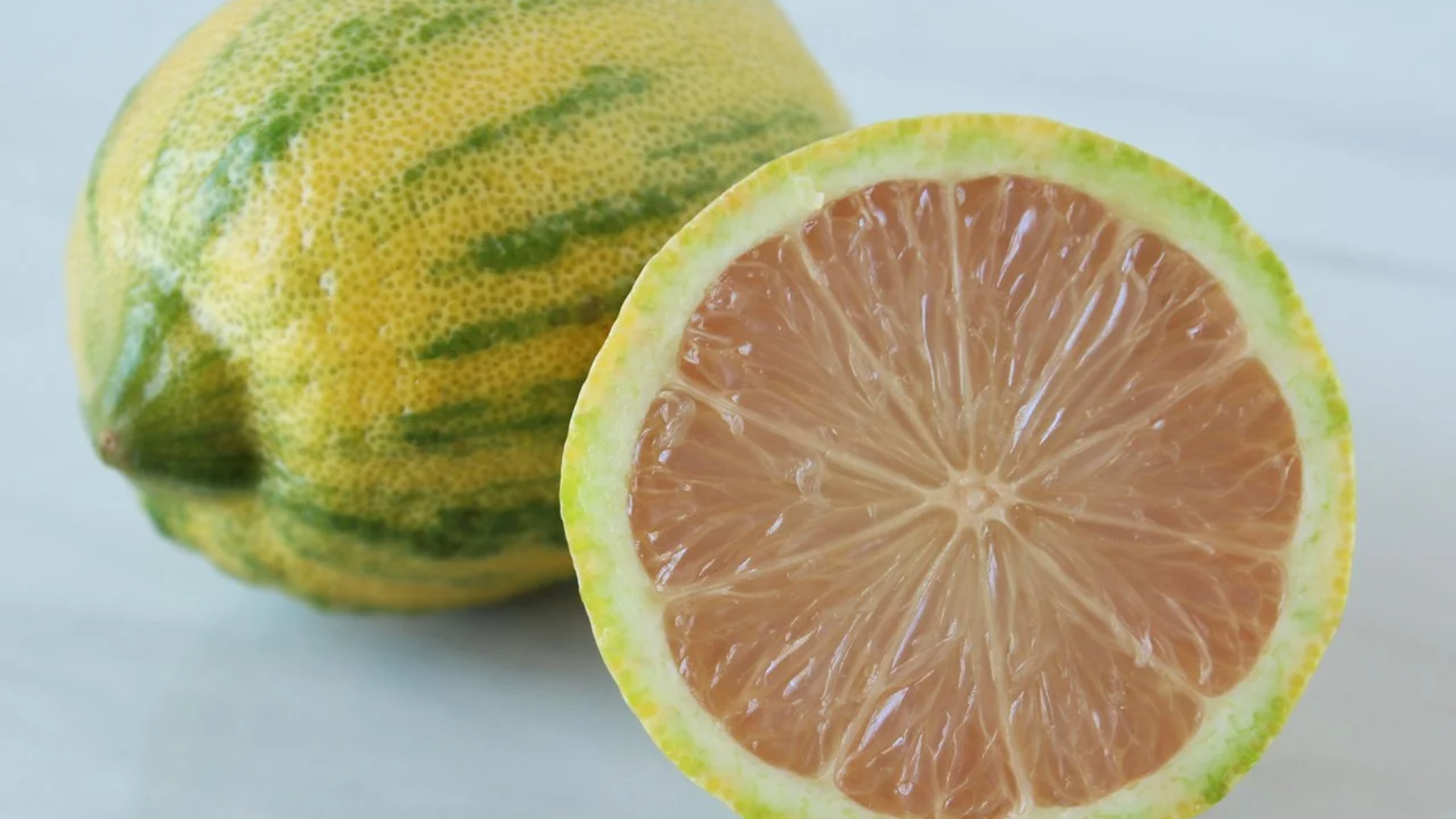
- Meaning: A lemon with green-striped skin and pink flesh
- Origin: A mutation of the Eureka lemon found in California
These are great for when I want to impress guests! The green-striped outside hides pink flesh inside. They taste similar to regular lemons but add a splash of color to drinks and dishes.
Pink lemons start with green and white stripes when immature, then develop yellow and green stripes as they ripen.
11. Sweet Lemon (Limetta)
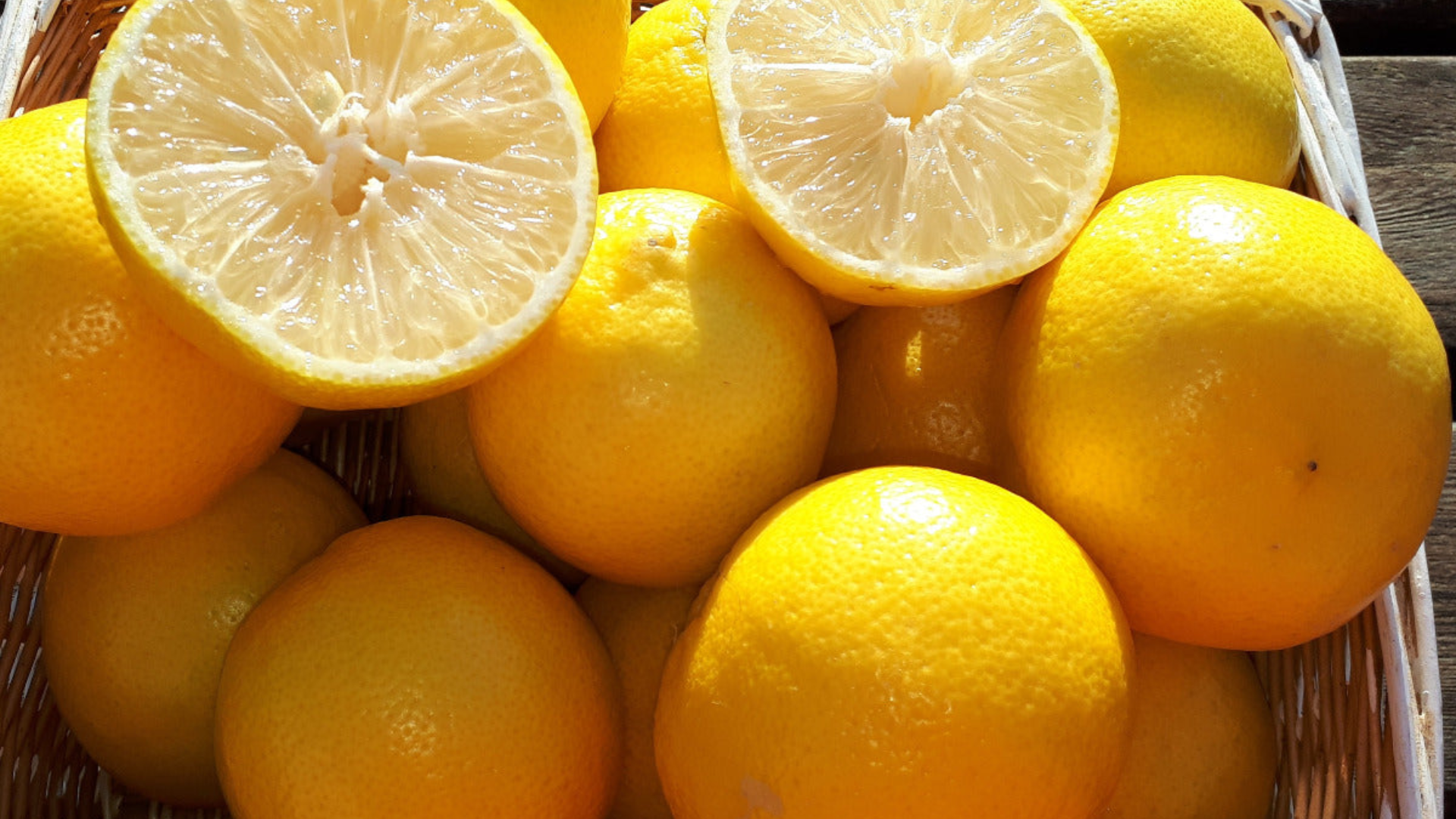
- Meaning: A non-sour citrus that looks like a lemon
- Origin: Mediterranean and South Asia
Despite the name, these aren’t really lemons at all! I was surprised when I first tried one, they have almost no acidity and taste mild and sweet, like a light orange.
Sweet lemons are popular in Middle Eastern and Indian cuisine, where they’re often eaten fresh like an orange instead of used as a flavoring. They’re perfect for people who want citrus flavor without the sour punch.
12. Kagzi Kalan Lemon
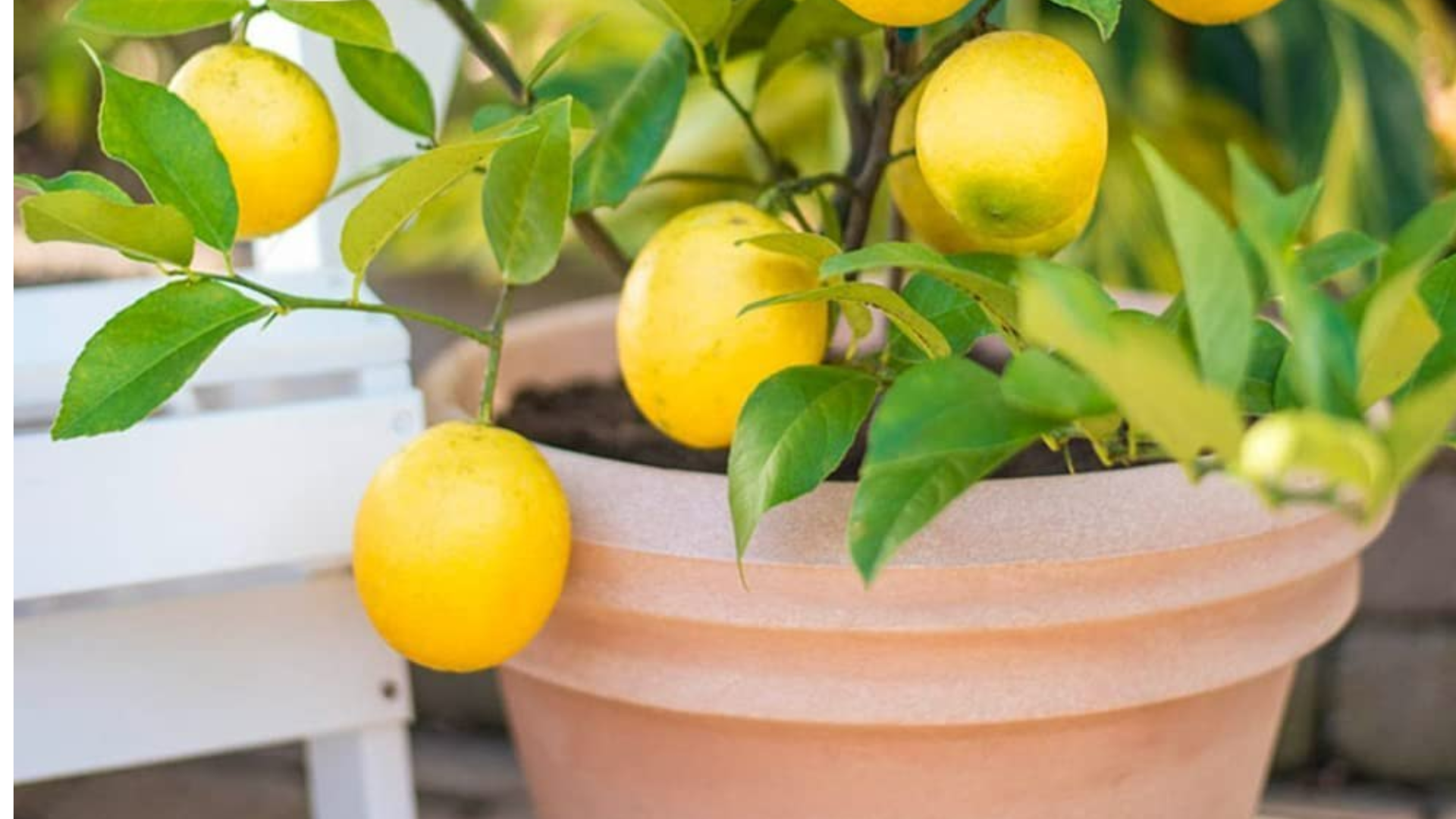
- Meaning: “Paper-skinned” lemon in Hindi
- Origin: India
These small, thin-skinned lemons are super juicy. I’ve found they’re best used fresh rather than cooked, with a clean, bright flavor that’s great in summer drinks.
Kagzi lemons are a staple in Indian cuisine, especially in the north. They’re often pickled whole with salt and spices to make a tangy condiment that’s enjoyed all year.
13. Interdonato Lemon
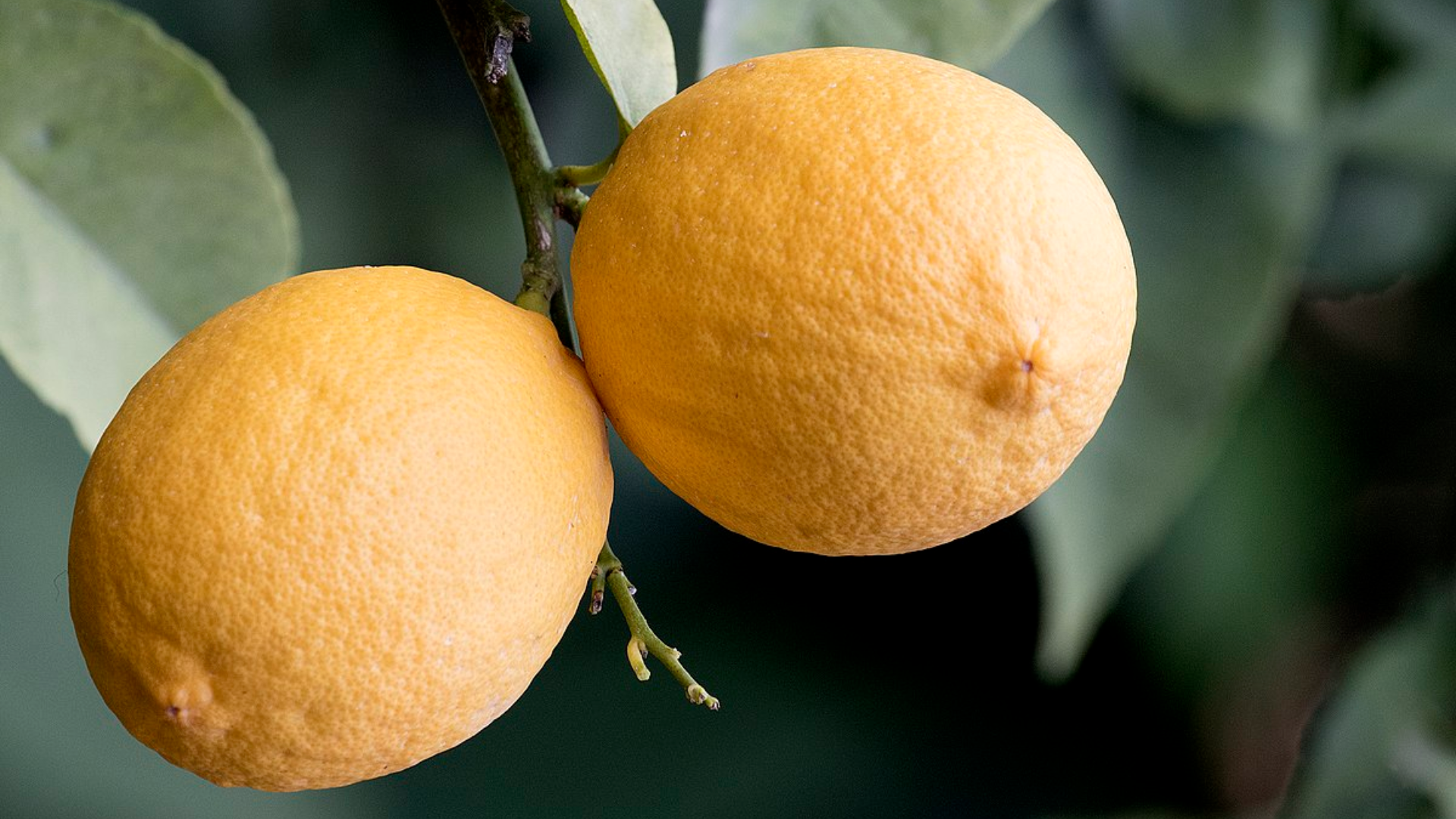
- Meaning: Named after Colonel Interdonato, who first grew it
- Origin: Southern Italy (Sicily)
This is a lemon-citron hybrid with a milder flavor. It’s one of the first lemons harvested each season. I like its gentle taste for dishes where I don’t want the lemon to overpower other ingredients.
Interdonato lemons are long and narrow, almost torpedo-shaped, and have a pale yellow color that sets them apart from other varieties.
14. Villafranca Lemon
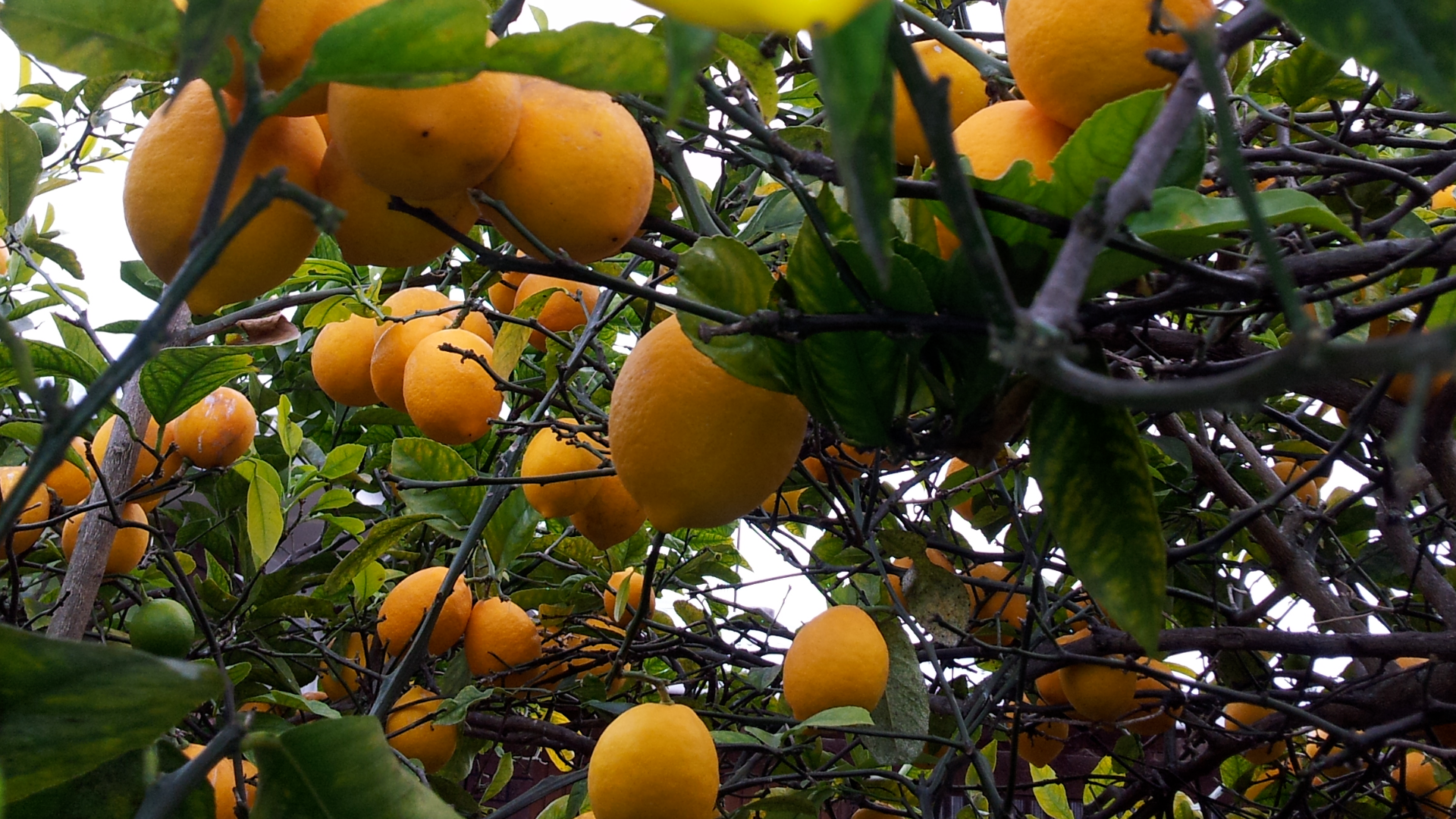
- Meaning: Named after a location in Italy
- Origin: Sicily, now also grown in Florida
Very similar to Eureka lemons, Villafranca lemons grow well in warmer places. I’ve found they last longer on the tree, which makes them great for home gardens in hot climates.
These trees are more heat-tolerant and disease-resistant than many other lemon types. The fruit has few seeds and medium-thick skin with plenty of juice and a nicely balanced flavor.
15. Baboon Lemon
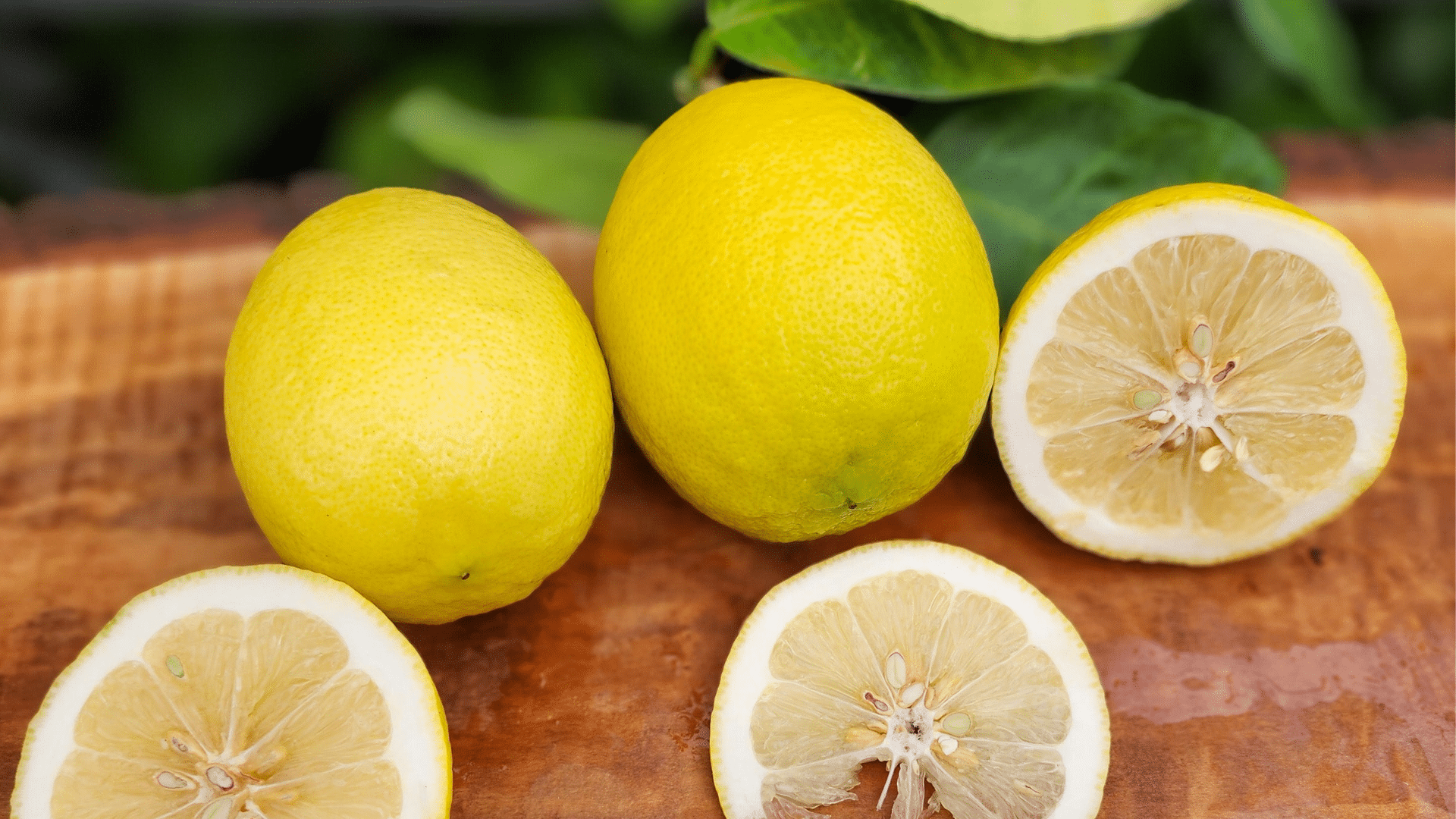
- Meaning: Named for its thick, rough skin
- Origin: Brazil
These unique lemons stay light green even when fully ripe. The skin is thick, but inside, they’re juicy with a strong, sharp flavor I like for bold sauces.
Baboon lemons look a lot like limes but taste distinctly lemony. They’re used in Brazilian cooking and even in drinks like caipirinhas as a zesty alternative to limes.
16. Jambiri Lemon
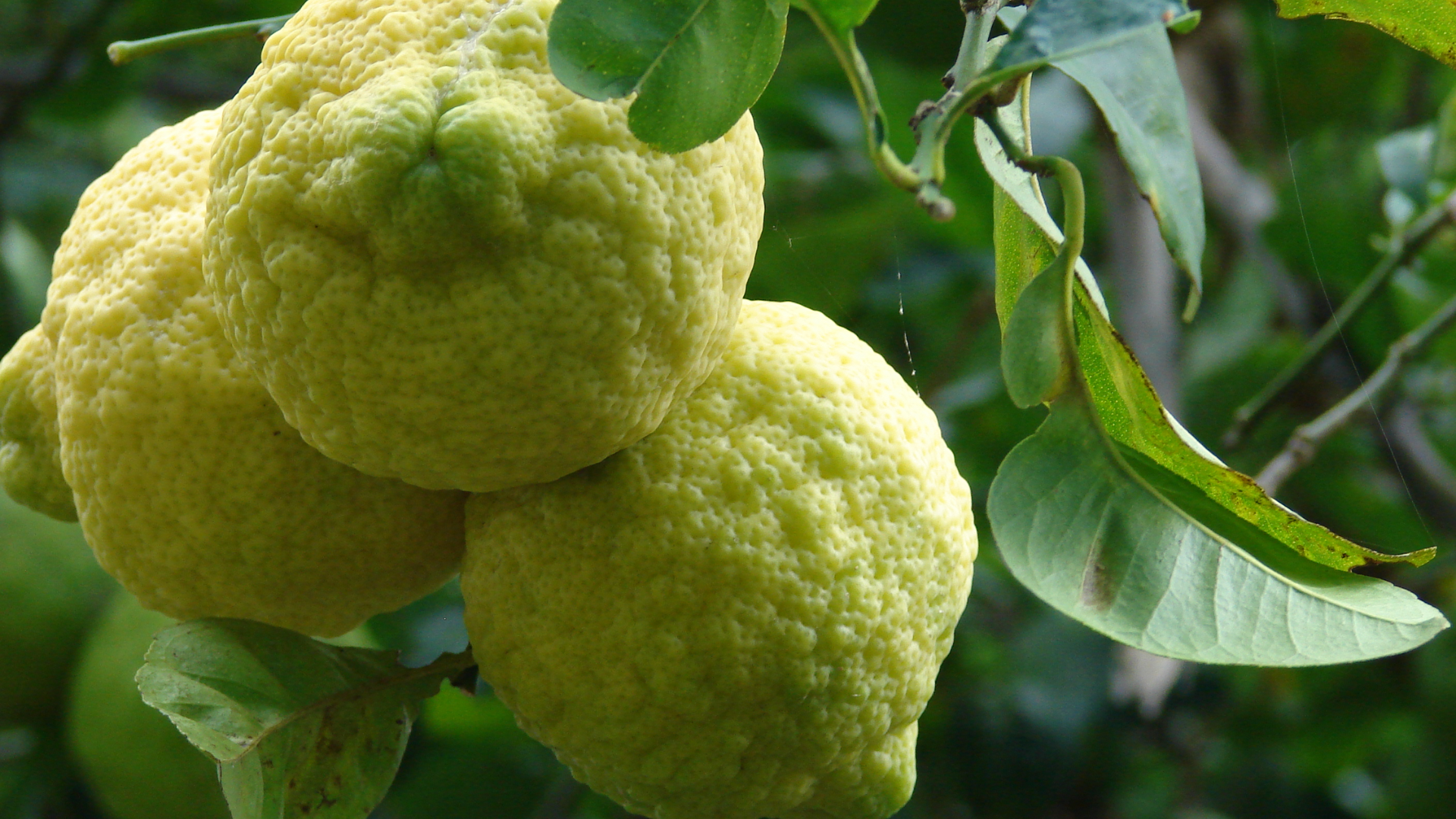
- Meaning: A rough lemon variety
- Origin: India and South Asia
This lemon has a slightly bitter edge to its flavor. In my reading, I’ve found it’s often used more in traditional medicine than in cooking.
The juice is very strong, and the skin is rough and thick. Jambiri lemons are commonly used as rootstock for other citrus trees because they grow fast and resist disease well.
17. Nepali Oblong Lemon
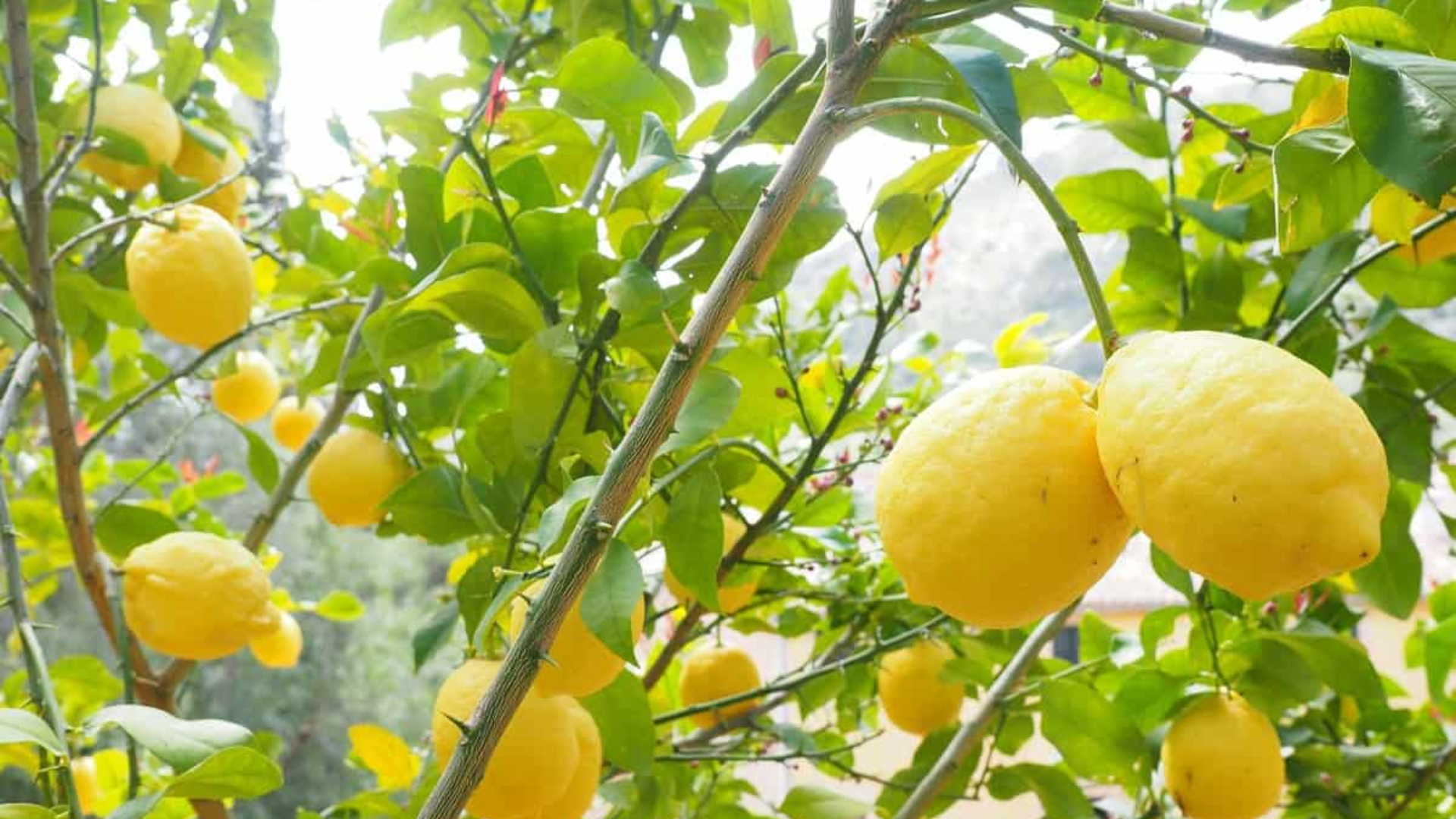
- Meaning: Elongated lemon from Nepal
- Origin: Himalayan foothills of Nepal
These oval-shaped lemons have a touch of sweetness. I find their balanced flavor works well in both sweet and savory recipes, especially in Southeast Asian dishes.
Nepali oblong lemons grow well in high altitudes where other citrus fruits struggle. They’re often used in traditional Nepali pickles, mixed with local spices and salt for a tangy, complex taste.
18. Avalon Lemon

- Meaning: Named after the mythical island
- Origin: Florida hybrid
These big, juicy lemons are common in Florida. When I want to make a big batch of lemonade, Avalon lemons are perfect because they produce a lot of juice with less squeezing.
They were developed for juice production and have some of the highest juice content among lemons. The trees are thornless and disease-resistant, which is great for growers in humid climates.
19. Bush Lemon
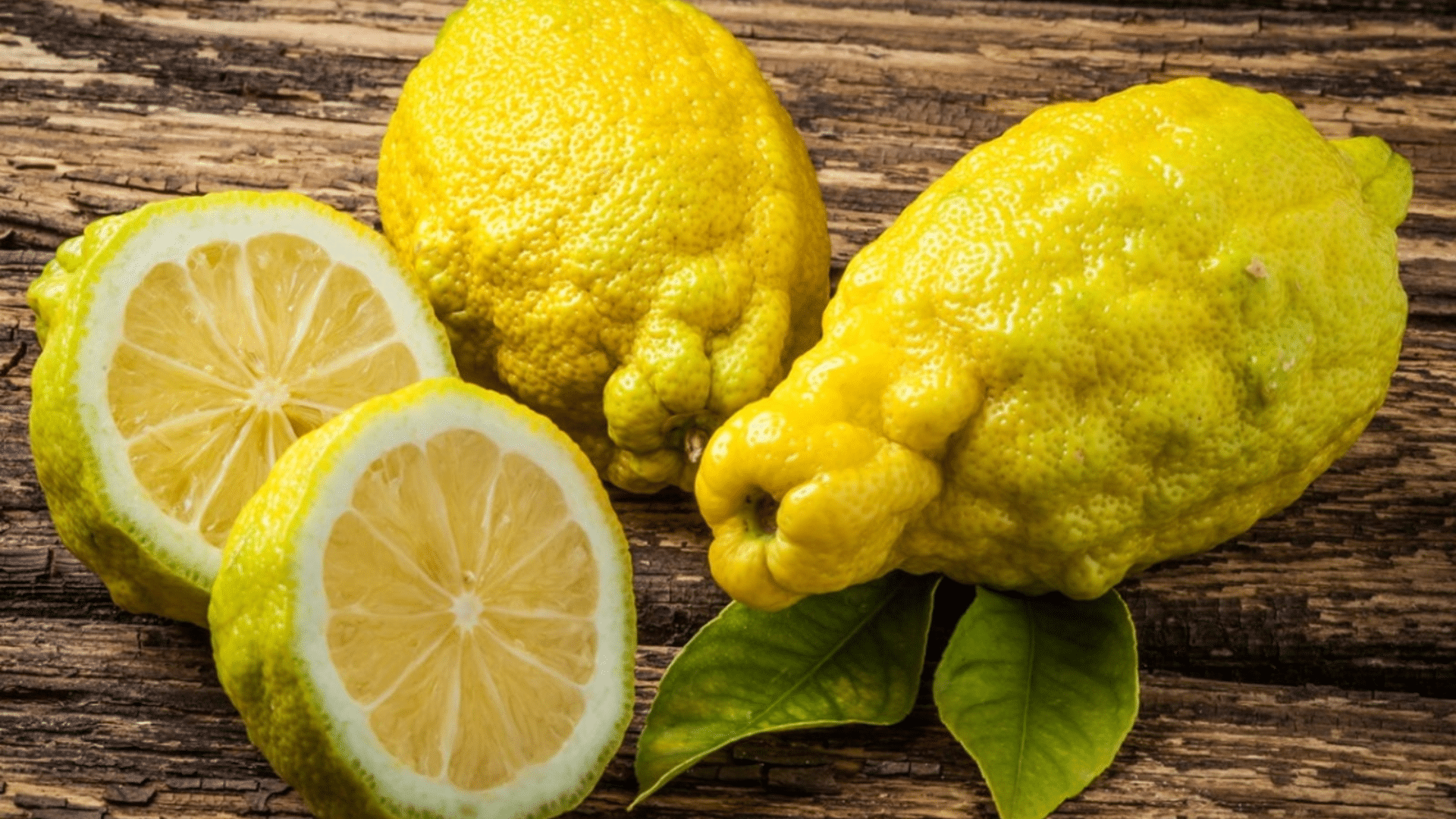
- Meaning: Grows wild on bushes rather than trees
- Origin: Australia
These hardy lemons grow wild in Australia and have very tough, thick skin. They’re not the best for juicing, but I’ve found their rind makes the most amazing marmalade with a deep, rich flavor.
Bush lemons have adapted to harsh conditions and don’t need much care. They’ve become part of traditional bush food used by Indigenous Australians.
20. Berna Lemon
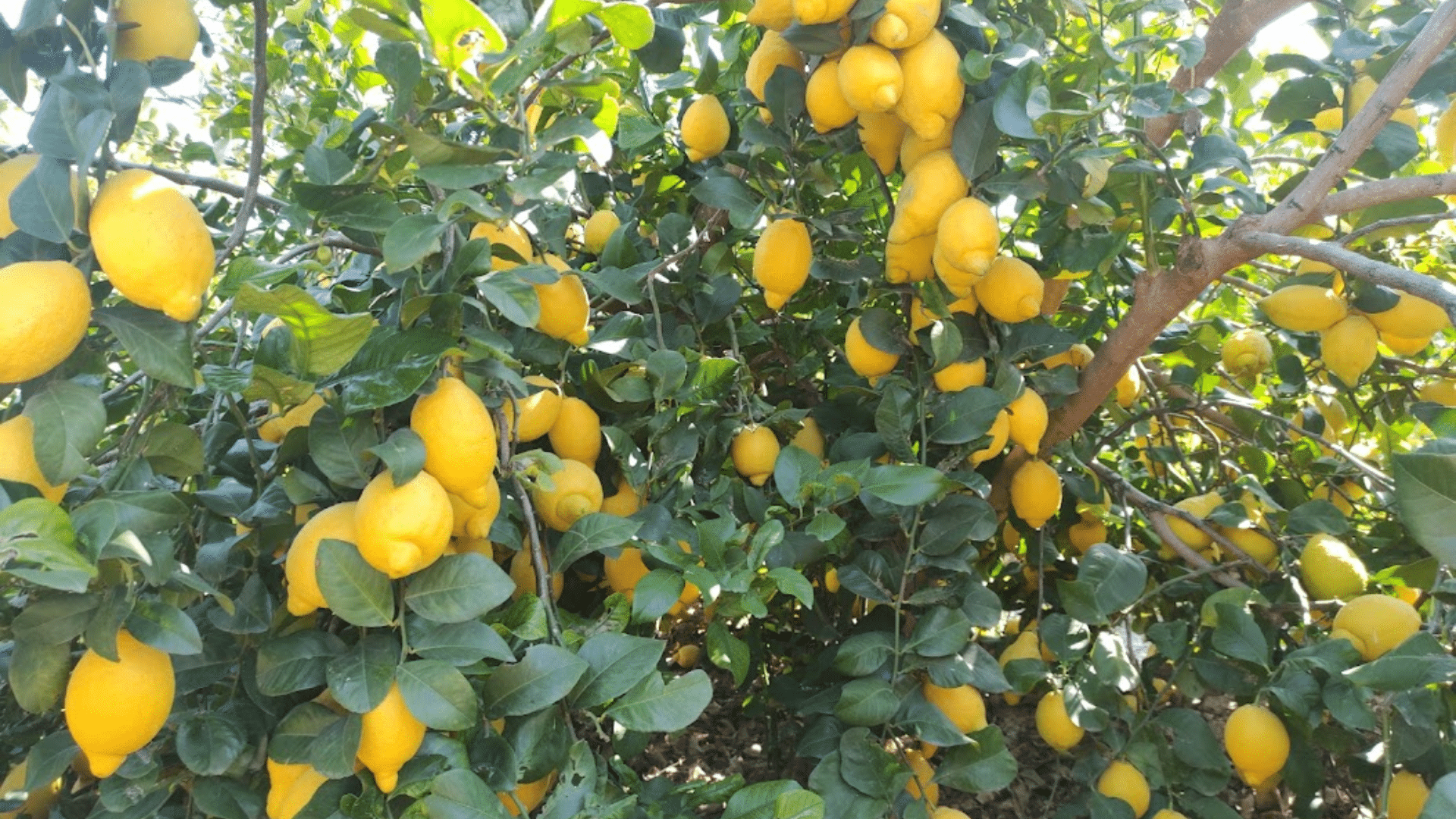
- Meaning: Named after its place of origin
- Origin: Spain
Another Spanish variety, Berna lemons grow well in hot, sunny areas. They’re mostly used for commercial juice production, but I like their reliable, classic lemon flavor for everyday cooking.
They produce fruit mainly in the summer, filling in gaps when winter lemons aren’t in season. Their oval shape makes them easy to process in factories, which is why they’re popular with large growers.
21. Chinotto Lemon

- Meaning: Often confused with the small bitter orange of the same name
- Origin: Mediterranean region
These small, somewhat rare lemons are especially sour. They’re sometimes used in specialty drinks, and I find their intense flavor works best in small amounts when you want a strong lemon kick.
Chinotto “lemons” are more closely related to sour oranges. They’re used in Italian chinotto soda, a bittersweet drink that’s an acquired taste but loved by many in Italy.
How to Pick the Best Lemons
Finding the perfect lemon isn’t hard when you know what to look for. I always check these things:
- Weight – Pick up the lemon. A heavier lemon usually means it has more juice inside.
- Skin – Look for smooth, firm skin. Avoid lemons with wrinkly skin or soft spots.
- Color – Bright yellow typically means the lemon is ripe. Some green is okay, depending on the variety.
- Smell – Gently squeeze the lemon near your nose. A good lemon has a fresh, strong scent.
Don’t be fooled by size; smaller lemons sometimes have more juice than bigger ones.
And remember to store them properly: keep lemons at room temperature for up to a week or refrigerate them for up to a month to make them last longer.
What You Can Do with All These Lemons
Now that you’re familiar with the different types of lemons, let’s look at how to use them. Each variety has its own strengths, and some are better suited for certain recipes than others.
I’ll share my favorite ways to make the most of these lemons in everyday life, whether you’re cooking, cleaning, or looking for natural health tips.
In the Kitchen
Lemons are incredible allies in the kitchen. I love making fresh lemonade with Meyer lemons because they’re naturally sweeter and need less sugar.
Adding lemon zest to pasta, fish, or chicken brings a bright, fresh flavor without adding extra calories. When I’m making salads, I often squeeze lemon juice over them instead of using vinegar, it gives a lighter, fresher taste.
For desserts, lemons really shine. They add the perfect balance of sweet and tangy flavor in lemon bars, cakes, and cookies.
If you’re feeling adventurous, try making homemade limoncello with Femminello lemons, they’re the traditional choice in Italy. Lemon curd made from fresh juice also makes a luxurious filling for tarts or cake layers.
Around the House
Beyond cooking, lemons work wonders throughout the home. I use lemon juice to disinfect my wooden cutting boards, the natural acid kills bacteria while removing food odors.
For furniture, a simple mix of lemon juice and olive oil creates an effective, all-natural polish that leaves surfaces shiny and smelling fresh.
When it comes to tougher cleaning tasks, I mix lemon juice with baking soda to make a powerful cleaner that cuts through grime without harsh chemicals.
Adding half a lemon to a load of white laundry helps brighten the clothes naturally. And don’t toss out those rinds, drop them into the garbage disposal to freshen it and eliminate odors quickly.
Health Uses
Lemons offer plenty of health benefits, too. I start each morning with fresh lemon in my water for a boost of vitamin C that helps support my immune system.
When I have a sore throat, nothing beats warm water with lemon and honey to ease the pain and provide relief.
After handling strong-smelling foods like garlic or fish, I rub a lemon half on my hands; it acts as a natural cleanser and removes odors quickly.
During the cold season, I like to make a simple tea with fresh lemon and ginger. It helps with congestion and brings a bit of comfort.
I always keep at least two types of lemons in my kitchen: standard Eurekas for everyday cooking, and Meyer lemons for when I want something sweeter with less acidity.
Conclusion
Who knew the world of lemons was so vast? Now you’re equipped with knowledge about these amazing lemon varieties that can truly transform your cooking.
I’ve found that switching from basic store lemons to special varieties like Meyer or Femminello can take a dish from good to incredible.
Start simple, try a Meyer lemon in your next dessert, or use pink variegated lemons to impress guests at your next dinner party. The right lemon can add just the right touch of acidity, sweetness, or aroma to your recipe.
Don’t feel like you need to find every type out there. Even adding just one new variety to your kitchen routine can open up fresh flavor possibilities. Your cooking will thank you, and so will everyone who gets to enjoy the results!


